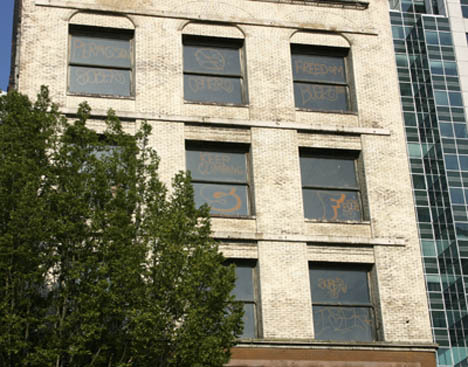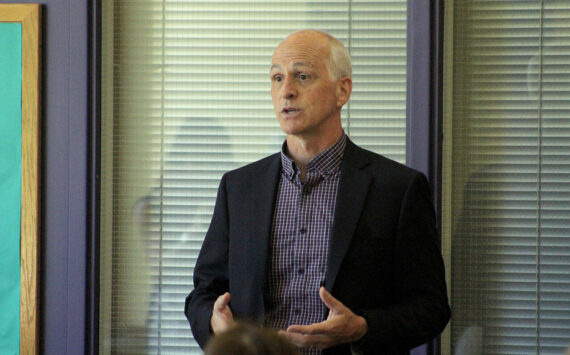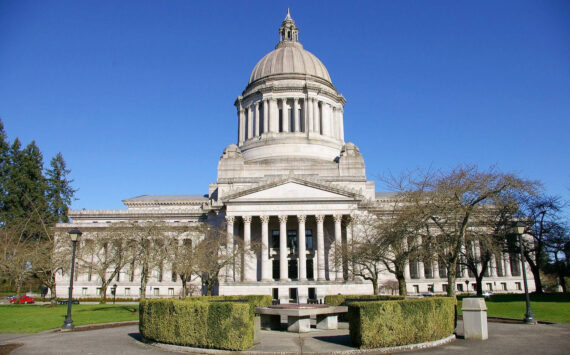The announcement this week that the six-story, 119-year-old Luzon Building downtown is in danger of complete collapse is one more obstacle for a building that has had its share of bumps and bruises.
On Tuesday, Tacoma City Manager Eric Anderson shared a local engineering firm’s findings with City Council. The information does not bode well for an old building that, a century ago, was one of the first West Coast skyscrapers.
“The Luzon Building, in its current condition, is a life safety hazard,” wrote Ryan H. Reichman, a principal at the structural engineering firm Swenson Say Faget, in a July 1 letter to City Hall. The Tacoma firm was hired by the City to conduct a structural evaluation.
Reichman went on to note:
- The north exterior wall of the building [should] be braced against collapse as soon as possible;
- The year-to-year deterioration of the structure has been significant. The building is currently in a state of progressive collapse, in that the framing members have lost structural integrity and are collapsing without additional external forces being applied;
- As the floor framing continues to pull away from the north exterior wall in other areas, as has visibly started on several levels, the exterior wall will lose bracing along the middle of its length, leading to a growing unstable condition. As the wall is currently leaning outward, we expect this lean to continue to grow until the wall can no longer sustain its own weight.
Over the past year, Luzon’s future was promising. Tacoma-based Gintz Group bought the building in March 2008 and went on to apply for a federal tax incentive that could have put $1 million toward a $7.5 million plan to convert the building into Class B leasable historic office space. The developer was optimistic and had experience renovating the former Stothart Hotel on Broadway.
Three months ago, however, Gintz Group announced it could not secure financing to complete the project. The building was put up for sale.
The Luzon’s history is well-documented.
Designed by Chicago architecture firm Burnham & Root, it was one of the first high-rise towers on the West Coast, the embodiment of engineering genius — sturdy brick shell, cast iron columns, and wood construction on the upper floors — that allowed the building to top out at a soaring height for 1890s Tacoma. It was an engineering model that would be copied. It opened the door to the future development of “skyscrapers.”
More striking than its storied and recorded history, however, is the symbol of what the building represents. It is an artifact of a period of misguided public policy in Tacoma and the nation. In the name of “Urban Renewal,” dozens of Luzon-era buildings along Pacific Avenue were razed and replaced by parking lots and garages. Today, the stretch of Pacific Avenue between 13th Street and 9th Street is one of the ugliest areas of the center city.
Local historian Heather Straub writes about this very issue in the program that accompanies the Tacoma Historical Society’s (THS) new exhibit — “From Ruins to Renaissance: The Architecture of Downtown Tacoma.”
The exhibit opened last night and is on display through the end of this year. I previewed the exhibit Wednesday morning with Straub and THS Director Mary Bowlby.
“The ‘Urban Renewal’ movement of the late 1950s to the early 1970s brought an influx of federal funds intended to transform downtown by creating new urban spaces with parking garages and terraced walls,” writes Straub. “Unfortunately, many historic buildings were demolished to make way for this Urban Renewal, and sometimes ideas took longer to come to fruition than the developers would have liked.
“After suburbanization and other factors emptied Tacoma’s downtown core, further alteration and demolition of more historic buildings during the early 1970s went mostly unchecked,” she adds.
Case in point — last year, Gintz Group unlocked the doors and invited the Index inside to take a tour. It was not unlike visiting the “Fight Club” house: paint peeled from most surfaces like skin off a week-old sunburn; holes large enough to crawl through existed in some of the walls; water dripped from too many places to count; and a sheen of dirt covered most windows, affecting a misty glow on most floors. In many areas, floors sank like whirlpools stretching down to the next level. Ceilings comprised of central beams with rib-like planks bowed like giant rib cages.
The tour confirmed much of Swenson Say Faget’s report.
Today, I’m not sure what would have been worse for the Luzon: razing it like so many other buildings along Pacific Avenue downtown; or letting it stand only to one day see it collapse on its own due to decades of neglect and deferred maintenance.


To read the Tacoma Daily Index‘s complete and comprehensive coverage of the Luzon Building, click on the following links:
- What’s Left of Luzon? Report keeps tabs on demolished building’s artifacts (Tacoma Daily Index, February 22, 2012)
- Sidewalk party marks Luzon Building demolition anniversary (Tacoma Daily Index, September 8, 2010)
- Burnham, Luzon Building featured in PBS documentary (Tacoma Daily Index, September 2, 2010)
- Year In Review: Luzon Building (Tacoma Daily Index, December 22, 2009)
- Luzon art show, fund-raiser to benefit Historic Tacoma (Tacoma Daily Index, December 16, 2009)
- Luzon’s Last Dawn (Tacoma Daily Index, September 26, 2009)
- Downtown’s Lost Block (Tacoma Daily Index, September 23, 2009)
- Luzon will come down Saturday (Tacoma Daily Index, September 22, 2009)
- Luzon’s Tough Lesson (Tacoma Daily Index, September 18, 2009)
- City will demolish 1890s Luzon Building (Tacoma Daily Index, September 15, 2009)
- Luzon’s Dark Legacy (Tacoma Daily Index, July 10, 2009)
- What Looms for Luzon? (Tacoma Daily Index, April 28, 2009)
- Luzon Unlocked (Tacoma Daily Index, August 28, 2008)
- Resolution would facilitate acquisition, renovation of Luzon Building (Tacoma Daily Index, October 29, 2007)
- Renovation in store for Luzon Building: Development of historic site to begin this spring; commercial and residential spaces planned (Tacoma Daily Index, January 13, 2005)
- Pacific Block closer to being sold (Tacoma Daily Index, January 14, 2003)
Todd Matthews is editor of the Tacoma Daily Index and recipient of an award for Outstanding Achievement in Media from the Washington State Department of Archaeology and Historic Preservation for his work covering historic preservation in Tacoma and Pierce County. He has earned four awards from the Society of Professional Journalists, including third-place honors for his feature article about the University of Washington’s Innocence Project; first-place honors for his feature article about Seattle’s bike messengers; third-place honors for his feature interview with Prison Legal News founder Paul Wright; and second-place honors for his feature article about whistle-blowers in Washington State. His work has also appeared in All About Jazz, City Arts Tacoma, Earshot Jazz, Homeland Security Today, Jazz Steps, Journal of the San Juans, Lynnwood-Mountlake Terrace Enterprise, Prison Legal News, Rain Taxi, Real Change, Seattle Business Monthly, Seattle magazine, Tablet, Washington CEO, Washington Law & Politics, and Washington Free Press. He is a graduate of the University of Washington and holds a bachelor’s degree in communications. His journalism is collected online at wahmee.com.








